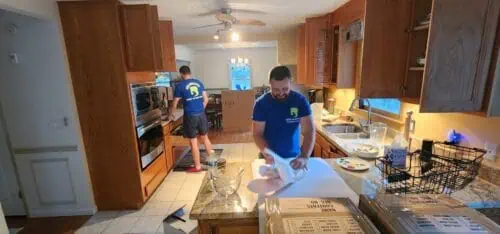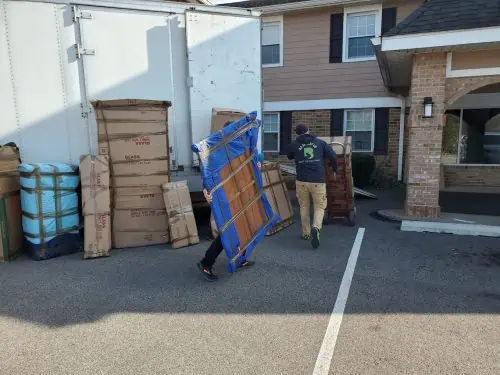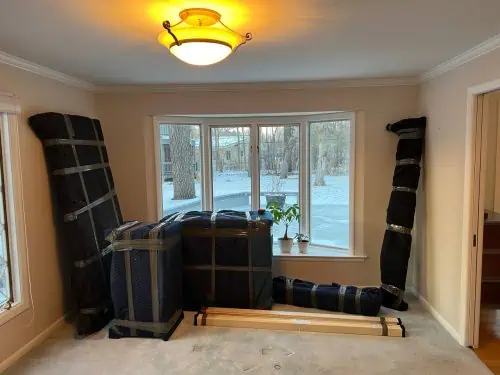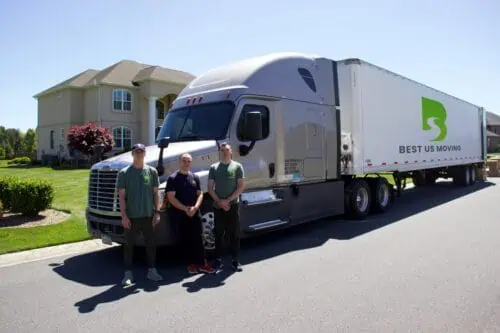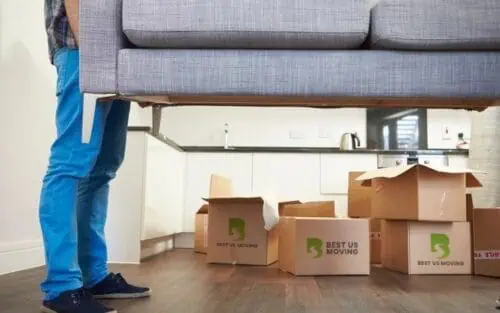Did you know that in 2022, almost 20% of Americans moved from one state to another? Statistics from the US Census Bureau showed that around one in five people relocated to another state. While moving can be exciting, it can also be stressful. However, with comprehensive, effective planning, you can take control of your move and turn it into a smooth interstate journey. Being organized is not just a strategy; it’s an empowering tool.
Relocating offers opportunities and the chance to embark on a new adventure, whether exploring new places or reconnecting with friends and family members. If you’re considering moving to a different state, preparation is not just crucial; it’s the first step towards a new beginning. In this informative article, we’ll share top tips and tricks to help you plan your move effectively. Armed with this guide, we’ll help you execute a seamless long-distance relocation, marking the start of an exciting new chapter in your life.
Pre-Move Planning
Planning helps to minimize stress and make the process of moving interstate simple, efficient, and hassle-free. Key elements of pre-move planning include:
1. Create a Moving Timeline. Working according to a timeline is a brilliant way to oversee a seamless long-distance move. You can create your own timeline or use our Ultimate Moving Checklist
2. Research Your New Location. Gather as much information about your new location as possible. Learning more about the area is beneficial, as this will help you plan and settle in quickly once you move into your new home. There are some general points to consider, but it’s helpful to tailor your research to your requirements. If you have children, for example, you want to research schools in the area. Examples of issues to consider include:
- Cost of living comparison. Compare living costs to prepare you for your move. You may be surprised at the difference between different parts of the country. Studies show that the cost of living is lowest in Arkansas and highest in California (source).
- Job market and employment opportunities. Finding a job before you move can help ease financial worries and make settling in easier. Use the Internet and networking opportunities to learn more about the local job market and search and apply for vacancies.
- Housing options and neighborhood research. If you’re moving interstate, you might not know a lot about different neighborhoods. Research areas, collect information, explore housing options online, and contact local real estate agencies.
- Schools and childcare facilities. If you have children, it’s beneficial to research school districts and childcare centers before you move.
Using reputable, reliable online resources and websites to collect and analyze information before you relocate is useful. Many people also find it helpful to connect with local communities via social media. Join a local Facebook group based in your new location and ask for recommendations for local service providers, get more information about different neighborhoods, and form new friendships. Reading reviews is another effective way to get recommendations.
3. Budget for Your Long Distance Relocation. Moving to a new home costs money. Before you relocate, calculate how much moving will cost and start budgeting for reputable, professional long-distance movers, for example. To help you budget, here’s a list of tasks to work through:
- Estimate moving costs. Research costs, get quotes, and determine the relocation process’s cost. Compare quotes from reputable long-distance moving companies or determine the cost of hiring a van, arranging courier deliveries, or taking time off work if you plan a DIY move. Add the cost of packing supplies. Buying in bulk is often a good way to reduce costs.
- Set up an emergency fund. An emergency fund can help cover unexpected costs, such as moving delays or unsettled bills.
- Understand the cost of living in your new location. Costs vary by state; sometimes, averages are much higher or lower than in your previous location.
Organizing the Move
The next step in the relocation process is planning the move. Moving into another state is no easy feat, so having a watertight plan is wise. Here are some jobs to complete at this stage:
Hiring Professional Movers
Hiring professional long-distance movers is a popular choice for individuals moving interstate. Working with a dedicated firm can make the process much easier and faster, but it can be more expensive than a DIY move.
If you’re looking for a moving company, take your time to get quotes, ask for recommendations from friends, neighbors, colleagues, and relatives, and read reviews. Get multiple quotes and make sure you understand estimates and moving contracts. It’s a good idea to look for companies specializing in the services you’re searching for, such as interstate and long-distance moves or transporting high-value or heavy items. Prioritize value for money over price. It’s often better to pay more for your move with a highly recommended company or offer additional services than to pay a lower fee for a company offering fewer services or horrible reviews.
Good examples of questions to ask potential movers include:
- Is the company fully licensed?
- What insurance do you have?
- Can you provide a full written quote?
- Do you have reviews and testimonials I can see?
- How long will the move take?
- Can you provide packing and unpacking services?
- What does the price include?
- What happens if something gets damaged or lost?
- How long have you been in business?
- Do you have experience in interstate moves?
DIY Moving
Some people prefer to go down the DIY route. DIY removals may be more time-consuming and stressful, but they can save money. If you’re considering this option, here are some tips:
- Weigh the pros and cons. Compare the advantages and disadvantages of hiring a moving truck to ensure you choose the right option.
- Get friends and family members involved. If friends, neighbors, or family members offer to help, let them get involved. Extra pairs of hands are handy for packing, cleaning, loading, and unloading the truck. You’ll also want to assign someone to help look after your children or pets during the move.
- Understand safety considerations. If you embark upon a DIY relocation, ensure you understand safety considerations, such as lifting heavy items and carrying your belongings up and down staircases.
Decluttering and Packing
Moving house is a brilliant time to declutter and organize your stuff. Follow these steps for stress-free decluttering, packing, and unpacking:
- Declutter before you start packing.
- Sell, donate, or throw away items you don’t want to keep
- Draw up a packing strategy and timeline.
- Keep essential items to hand in an overnight bag.
- Label every box with the type of item and its intended location in your new home.
- Before you start packing, ensure you have the needed supplies, such as boxes, tape, and containers for heavy, valuable, fragile, or awkwardly shaped items.
Logistics and Legalities Of A Long Distance Move
When you relocate, you’ll need to ensure you’re up to speed with logistics and legalities. There are several tasks to complete, including:
- Change Your Address. You must update your address to ensure the accuracy of your documents and accounts and to prevent the loss of important mail and deliveries.
- Update your address with USPS, banks, and other important institutions
- Redirect mail and look for mail forwarding services
- Transfer Utilities and Services. When you move to a new house, you’ll need to transfer utilities and services to your new address. This involves:
- Contacting service providers and utilities companies and informing them of your upcoming move
- Arranging the disconnection and reconnection of utilities
- Settling final bills
- Updating Legal Documents. You’ll need to update your legal documents when relocating interstate. Examples include:
- Your driver’s license
- Your vehicle registration
- Voter registration
Settling In After A Long Distance Move
The final step of the relocation process is settling into your new home and neighborhood. Effective, efficient planning can make this stage much easier and more enjoyable. To make sure you feel at home as quickly as possible, here are some steps to help you transition:
Unpacking and Organizing Your New Home
Unpacking can seem like an arduous task at the end of a move, but it doesn’t have to be time-consuming or stressful. Here are some top unpacking tips to save you time and effort:
- Always label packing boxes and take each box to the relevant room
- Pack an overnight bag of essentials for the first night
- Unpack the most important items first
- Set up the rooms you need most as a priority, for example, the kitchen and bathroom
- Arrange your new space efficiently and invest in storage solutions to prevent clutter
Exploring Your New Community
Most people can’t wait to explore their new neighborhood after relocating to a different state. To help you settle quickly and make your new community feel like home, here are some ideas for your first few days and weeks:
- Find local amenities. Navigate around grocery stores, shops, entertainment, and leisure facilities, and learn where to find health and dental providers and services.
- Join community groups and social media networks. Social media is a great way to meet people before you move and find friends in the local area once you’ve reached your destination. Join neighborhood social media groups and look for groups relevant to your hobbies and interests. Consider asking for recommendations if you enjoy playing sports, finding a local choir, or searching for friends with a passion for art, history, or baking.
- Engage in local activities. Participating in community life will help you make new friendships and settle in quickly. Look for details of local events and groups you can join. Fairs and festivals are popular in the summer, while seasonal events in the fall and winter often unite communities.
- Introduce yourself to your neighbors. A simple ‘hello’ could start a great friendship.
Managing the Emotional Transition
It’s common to experience many emotions when you move, particularly if traveling a long way. It’s natural to miss friends and family and to take time to adjust to new surroundings. These tips will help you manage the emotional transition of a long-distance move:
- Try to be as organized as possible to minimize stress.
- Give yourself time to pack, unpack, and settle in.
- Stay connected with old friends and neighbors, colleagues, and family members.
- Don’t panic if you don’t fall head over heels for your new home as soon as you move in.
- Throw yourself into community activities, and don’t be afraid to reach out and make new friends.
- Minimize disruption for children and pets. Stick to routines as much as possible, make the first few days fun and relaxing, and take familiar items like comforters for children and blankets for dogs and cats. If you have a pet, ask for recommendations from the best local veterinarian.
Need Help with a Long-Distance Relocation? Get a Free Quote from Best US Moving now!
Relocating can trigger a full spectrum of emotions, from excitement to anxiety. Careful planning can help you execute a seamless, hassle-free move if you’re preparing for an interstate move.
If you’re moving to another state and looking for a professional, efficient, long-distance moving service, contact Best US Moving for a free quote or consultation. Best US Moving specializes in interstate relocations, providing fast, cost-effective services for a stress-free interstate move. Call us now at 814-527-2572 or request your free estimate.



